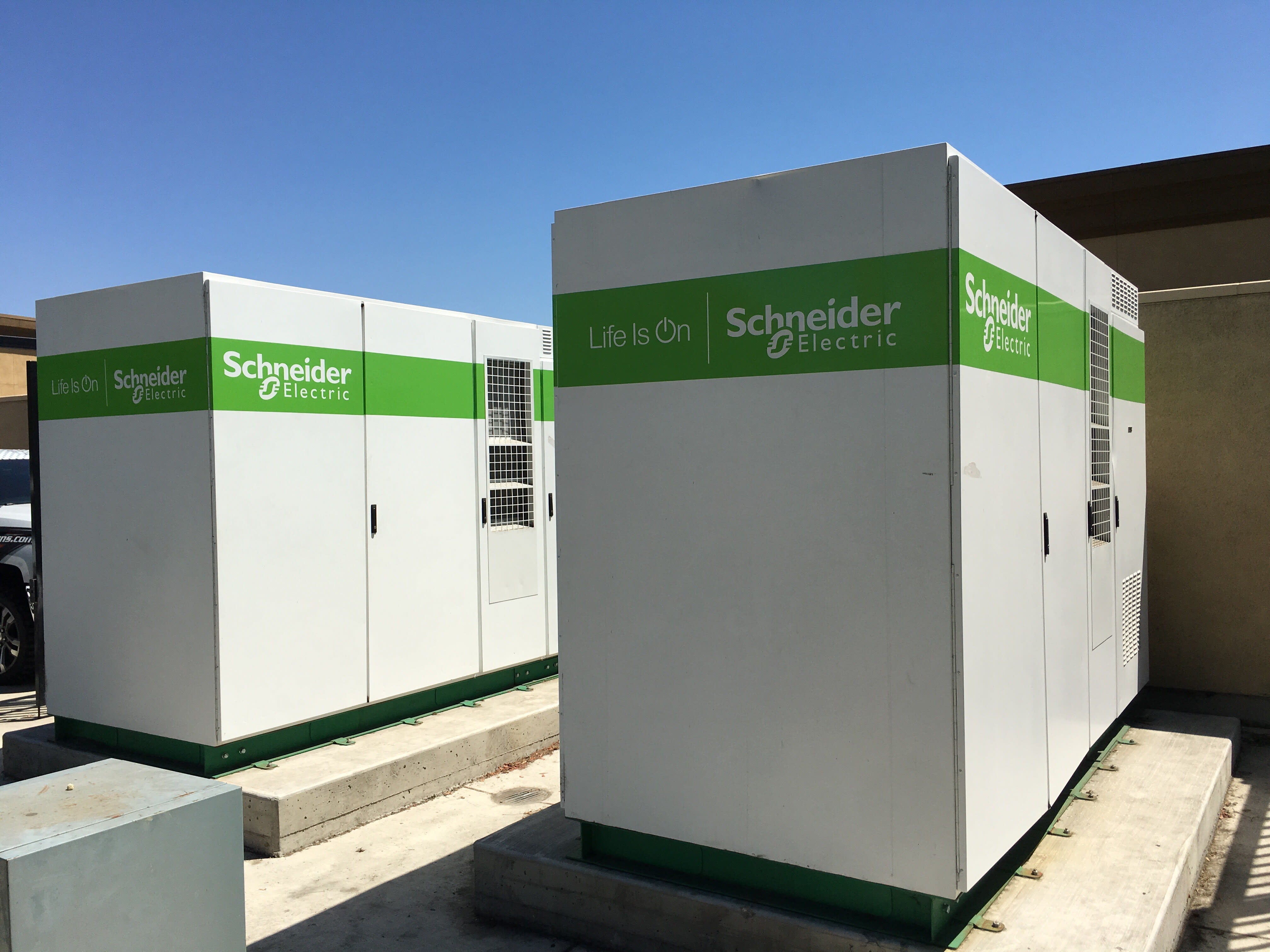How a California District Recharged Their Energy Savings with a Battery Storage System
Storing solar energy with batteries means districts can avoid sky-high peak demand rates
While many school districts have added solar panels over the last several years in an effort to reduce energy costs, a handful of forward-thinking districts have coupled that technology with another powerful energy saver most have yet to consider.
That technology is lithium ion battery storage. Just as the name suggests, batteries—which vary in size from a storage closest to a parking space—store energy. That way, when clouds cover the sun during the day and solar power drops, the batteries can take over, thus avoiding costly peak demand rates. Solar recharges the battery during low demand times or more affordable times of the day and night, so the cycle can be repeated.
With peak rates, on average, as much as $5.00 per kWh vs. as little as 23 cents per kWh for non-peak rates, the savings from using temporary battery power quickly add up. At the same time, battery technology has expanded rapidly in the last several years and prices have fallen enough to make combining batteries with solar power a cost-effective combo.
That’s great news, because combining battery storage with solar power is proving to be a dynamic energy saver, especially for California schools. “This is one of the only ways school districts can manage those peak demand costs in California,” says Marc Starkey with Schneider Electric. “It’s a small footprint that can have a big financial return, and rain or shine, the batteries are going to work every single day.”
Stockton School District Uses Battery Powered Savings for Upgrades
Stockton Unified School District—a large urban/rural district in the San Joaquin Valley—was already one of the most energy efficient districts around, with solar panels over several sites. Having previously implemented several conservation measures, the district needed to find a way to squeeze out additional energy savings in order to optimize their entire Prop 39 allocation.
After working with Schneider Electric, the district discovered it could do that and more by bundling their existing solar arrays at two high schools with lithium ion batteries. “We had already completed a lot of the low-hanging fruit when it comes to energy savings,” says District Superintendent, Dr. John Deasy. “So we were really surprised how much extra savings we could get simply by combining battery storage with solar.”
The two high schools, Stagg and Edison, received solar batteries at no cost to the district under Prop 39 grant funding along with a $600,000 rebate covering the total cost of the batteries. The 250kW battery at Stagg and 500kW battery at Edison will help to offset up to 60% of their monthly bill by better harnessing and managing the renewable energy already being generated for the district. The batteries at just these two schools will save the district $1.6 million over the next ten years.
“That’s not a bad return on our investment,” says Steve Breakfield, the district’s Facilities & Planning Director. “We’re extremely happy with the savings we’re able to achieve with battery storage.”
Even better, Stockton can use the money from its energy savings to redirect dollars back into the classroom, fund deferred maintenance needs or even add new teaching positions. “When we saw how the batteries could help us with those much needed improvements, we really saw the value in investing in that technology,” says Deasy. “It was a no-brainer.”
Stockton unveiled its new Battery Energy Storage System during an October 29th Energy Awareness Recess at Edison High School. The morning featured a ribbon cutting event to allow students in attendance to learn more about how their Stockton USD is leading the way in sustainability.

Why Battery Storage is Becoming More Attractive for Schools
Currently, estimates show that only about 3% of California school districts are using battery storage. But as the costs continue to drop, and peak demand rates continue to climb, more and more are recognizing battery’s benefits:
- Batteries combined with solar power allow districts to avoid costly peak demand energy rates.
- The footprint of batteries is minimally invasive.
- Solar power and Grid Power regenerate batteries when demand is low through a real-time system that enables batteries to intelligently discharge and recharge for optimal savings.
- Batteries can work every single day to help defray energy costs.
- The cost of batteries has come down significantly and will continue to do so.
But as with all new initiatives, it’s important to work with a trusted partner on battery storage initiatives. Look for an energy management company willing to be held accountable for energy savings. Reputable energy management companies should also offer third party software showing actual savings and maintain accountability.
“Working with Schneider Electric has been great,” says Breakfield. “They really helped us to see why investing in battery storage made so much sense and how it could help us achieve our other goals as well.”
See Stockton’s facilities in action: